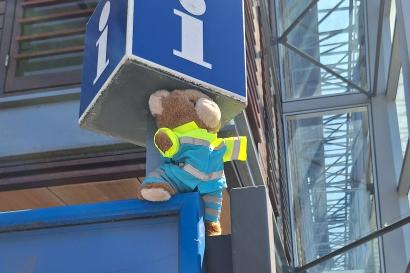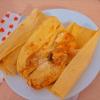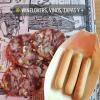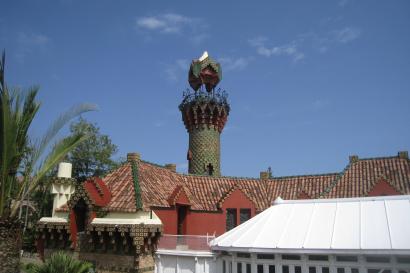One of the first things I learned was the difference between a carta and a menú. I wondered if the two words were just the same word used in different places. Such as restaurants using carta and fast-food places would use menú as it is less formal. But then I realized that menú is two things. It is a lunchtime item and a multi-course meal rather than the restaurant’s menu. The “carta” is a restaurant’s menu where every food item is listed. Menú usually include an appetizer, the main meal, and a desert and a drink if you are eating in but if you are getting it to go it is not always included. These menús have their own section with what dishes are a part of the menú. However, in restaurants that sell “comida casera” the menú options change daily. “Comida casera” is home cooked food and are made fresh daily. Most of the food at these restaurants is not available until after 1pm. The cheapest menú I had was at “La Pitera de la Rúa” for about 10 euros. The place I got most of my menús from is "Amesa Puesta" which is just across from IES Salamanca.
While studying here I have learned a lot about the Spanish gastronomy culture. These things are not something hard to learn or look up, but it did take a while for me to understand what people say. Such as why people would ask for a menú and get a meal and not an actual menu of the food. As well as new terminology of words like vegetable names or how different Spain and Mexican words are for the same item. Such as a beer being called a “caña” as well as “cerveza” I also tried to order a menú during dinner hour and I was told it was only for lunch time which also confirmed it being a lunch item.
I think this is also common in French as during one of my French classes the professor talked about the difference between the menu of the day and the menu with every item on it. These small details about food and how language translations can be misunderstood were quite interesting to learn about. Not only from the perspective of a bilingual but also as a tourist. As I walked through Plaza Mayor I would hear many different languages, From other English speakers to French, Portuguese, Italian, Slavic, and Asian languages. Some things around the Plaza Mayor are translated in English and many employees know English because of how much tourist there is. However, I did notice some grammatical errors but also well translated items. Not just in Salamanca but also while traveling around Europe.
Especially in food-related areas as this is where most tourists have questions and need things translated to order correctly. Such as if someone has a food allergy or dietary restriction like celiacs, seafood, or nut allergies. Some terms related to these allergies can be helpful as you navigate eating while abroad. For celiac disease asking for “sin gluten” and saying you have “celiaca” is enough for them to help you. “Mariscos” for shellfish and seafood. “Frutos secos” is a broad term for nuts like almonds, hazelnut, chestnut, peanuts, and most nuts. If you have a bigger allergy to a specific nut you can search for the name. Some cartas will have allergens listed but the employees are quite helpful with any questions you may have. Packaged food will usually have allergens in bold print on the ingredients section. Hopefully these insights help you as you live in Spain.

Raine Botello
I am a Mexican, Queer, Posse scholar. I am very excited to study abroad and open to all the experience I will have. From good to bad, I am ready for the challenges that await and am ready to share my experiences.






